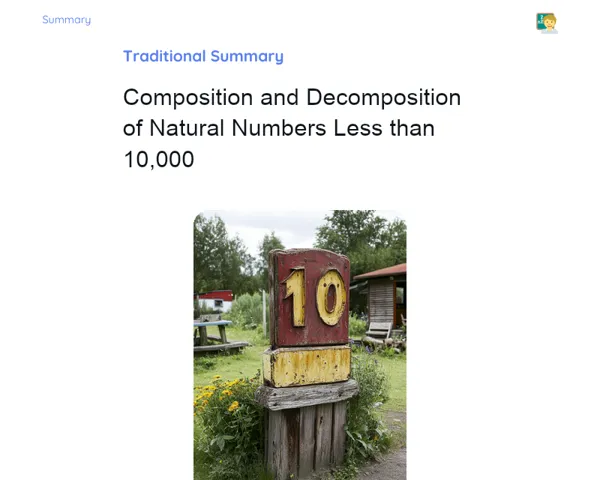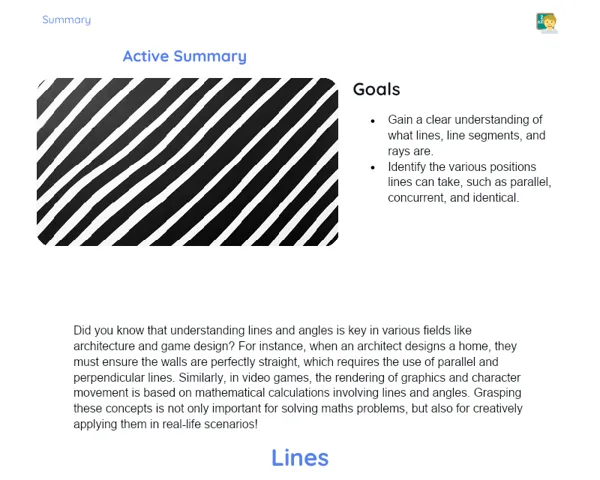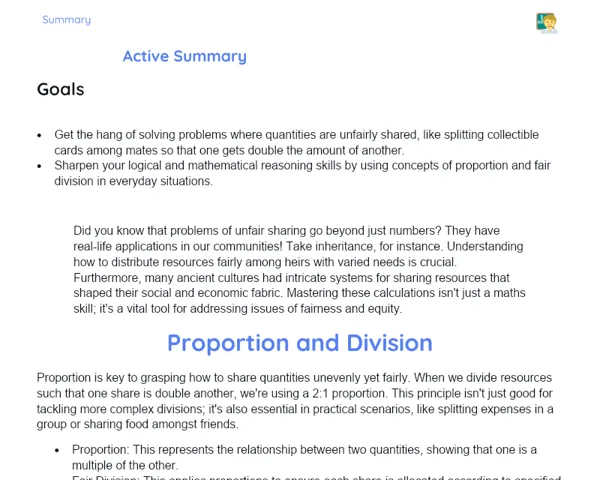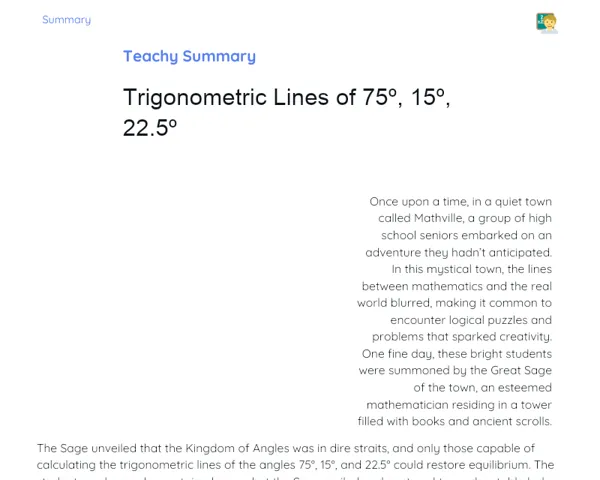Summary Tradisional | Sequences: Increasing and Decreasing
Contextualization
Today we’re diving into numerical sequences, which are simply lists of numbers arranged in a certain way. These sequences can be increasing, meaning the numbers go up, or decreasing, meaning the numbers go down. It’s essential to grasp how these sequences function as they form the foundation for more advanced maths skills and help us organise information more effectively.
You’ll find numerical sequences in many areas of everyday South African life. For instance, when climbing a flight of stairs, you're following an increasing sequence of steps. Conversely, when descending, you're moving through a decreasing sequence. Additionally, numerical sequences play a significant role in technology, like in our phones and computers, ensuring proper functionality.
To Remember!
Definition of Numerical Sequences
A numerical sequence is a series of numbers arranged in a specific order. This order can be increasing, where the numbers go up, or decreasing, where they go down. Organising numbers this way makes it easier to spot patterns and carry out calculations.
In an increasing sequence, each number is greater than the one before it. For example, in the sequence 2, 4, 6, 8, each number increases by 2. This type of sequence is handy for understanding progressions and repeated additions.
On the flip side, in a decreasing sequence, each number is less than the previous one. Take the sequence 10, 8, 6, 4, where each number decreases by 2. This helps in learning about subtractions and repeated reductions.
Mastering numerical sequences is key for stepping up to advanced mathematical learning, like algebra and calculus, as well as for solving everyday problems.
-
Numerical sequences help us organise numbers logically.
-
Sequences can either go up or down.
-
Understanding sequences is a basic requirement for more advanced mathematical skills.
Identifying Increasing Sequences
Identifying an increasing sequence involves checking if each number is greater than the one before. For instance, in the sequence 1, 3, 5, 7, each number increases by 2. The consistent rise in numbers marks the sequence as increasing.
A practical method to spot increasing sequences is to look at the difference between consecutive numbers. If the difference is positive and stays the same, then you’ve got an increasing sequence.
Also, these sequences can rise in different ways—by 1s, 2s, or according to a particular formula. Being able to see these patterns helps predict what the next numbers will be.
-
Increasing sequences show numbers that rise.
-
A constant positive difference signals an increasing sequence.
-
There are various ways increasing sequences can progress.
Identifying Decreasing Sequences
To spot a decreasing sequence, you need to check if each number is less than the previous one. For example, in the sequence 9, 7, 5, 3, each number decreases by 2. The regular pattern of decrease marks it as a decreasing sequence.
You can also check the difference between consecutive numbers for this. If the difference is negative and remains the same, the sequence is decreasing.
Similar to increasing sequences, these can also taper off in various patterns—by 1s, 2s, or following a specific rule. Recognising these patterns helps in predicting future numbers.
-
Decreasing sequences have numbers that drop.
-
A constant negative difference identifies decreasing sequences.
-
Different patterns can characterise decreasing sequences.
Guided Practice
Guided practice is crucial for solidifying our grasp of numerical sequences. During this time, students will be given incomplete sequences and will be tasked with filling in the gaps based on the identified patterns.
For example, in an incomplete increasing sequence like 1, 3, 5, __, __, students should realise the sequence increases by 2s and fill in the blanks with 7 and 9.
In another case, with a decreasing sequence like 10, 8, 6, __, __, students should determine that the sequence decreases by 2s and complete it with 4 and 2.
This practice strengthens their understanding of patterns and enhances their ability to apply mathematical logic to solve problems.
-
Guided practice reinforces understanding.
-
Students complete sequences based on the patterns they've identified.
-
Practice boosts the application of mathematical logic.
Key Terms
-
Numerical Sequence: A list of numbers arranged in a particular order.
-
Increasing Sequence: A sequence where each number is greater than the one before it.
-
Decreasing Sequence: A sequence where each number is less than the previous one.
-
Numerical Pattern: The rule or consistency that defines the number sequence.
Important Conclusions
In this lesson, we explored numerical sequences with a focus on increasing and decreasing types. We learned that these sequences logically organise numbers, helping us to identify patterns and perform calculations effectively. This understanding is vital for advancing our mathematical skills and tackling everyday challenges.
We highlighted the importance of accurately recognising increasing versus decreasing sequences by observing the regular patterns in the rise or fall of numbers. Practical examples like 2, 4, 6, 8 for increasing sequences and 10, 8, 6, 4 for decreasing ones illustrated our points. The guided practice reinforced our knowledge, enabling students to apply mathematical logic while completing incomplete sequences.
Lastly, we underscored that understanding numerical sequences is not only important for maths but also aids in numerous everyday situations, like organising information and identifying logical patterns. Equipped with this knowledge, students will be better prepared for future mathematical challenges and to apply these concepts in real-world scenarios.
Study Tips
-
Review the examples of increasing and decreasing sequences shared in class, focusing on identifying the patterns.
-
Try creating your own numerical sequences and challenge a classmate to complete them, ensuring the patterns are followed.
-
Explore online resources such as educational games and math apps to practice numerical sequences in a fun and engaging manner.



